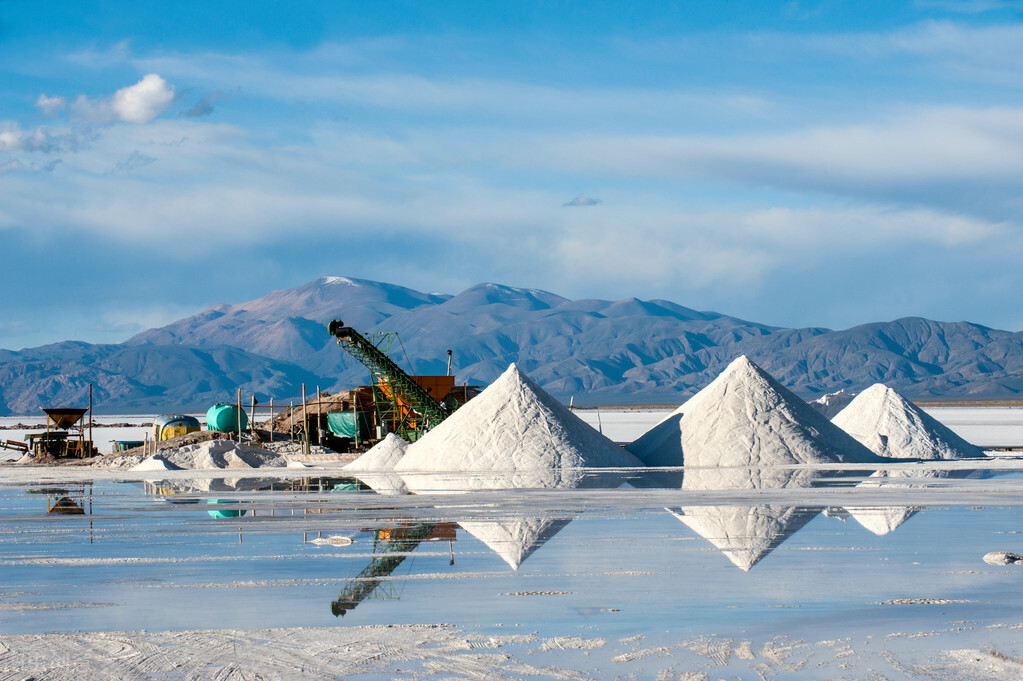The turning point of lithium carbonate
Aug,12,24
As the saying goes, 'The wind rises at the end of Qingping'.
Since August, although the overall pattern of relatively loose supply of lithium carbonate has not changed,
many signals of change have begun to be concentrated.
According to the latest Q2 report data released by international lithium mining giant Albemarle Group, its net loss has reached $188 million,
and sales have also decreased by nearly 40% compared to the same period last year.
For this reason, Albemarle has announced an emergency halt to its production lines 2 and 3 at Kemerton Lithium Processing Plant in Australia.
The factory's annual supply of 50000 tons will be directly reduced by half.
In addition, according to recent data released by Chilean customs, the country's exports of lithium carbonate to China in July were only 15700 tons,
a sharp decrease of 9.6% from the previous month, and have been declining for three consecutive months.
With a shipping cycle of 36-47 days, this impact may begin to manifest in August and September.

Industry insiders have stated that although everything was expected, with the continuous decline in lithium carbonate prices,
prices below 80000 yuan/ton have already fallen below the cash cost warning line of nearly 90% of lithium carbonate companies.
Under the pattern of oversupply, the price center of lithium carbonate continues to shift downwards.
Since May this year, the price of lithium carbonate has entered a volatile downward trend, with a drop of over 30% in the past three months.
The main contract and spot price of lithium carbonate futures both fell below the 80000 yuan/ton mark on August 2nd.
The main contract LC2408 of lithium carbonate futures hit a low of 79600 yuan/ton during trading, hitting a new low since its listing;
On the same day, the average price of battery grade lithium carbonate was reported at 795 million yuan/ton, hitting a three-year low.
Wang Chuhao, an analyst at Changan Futures,
believes that the supply and demand pattern of the lithium carbonate market remains
a key factor affecting price trends due to the recent acceleration of the market's bottoming out.
On the one hand, the policy effect of doubling the old for new subsidies needs some time to be transmitted,
and the short-term fundamentals remain strong in supply and weak in demand.
On the other hand, the increasing supply of mines and salt lakes worldwide has further intensified market competition.
The simultaneous decline of spot and futures means that the current situation of oversupply is becoming increasingly severe,
"said Wang Jundong, an analyst at Zhongtai Futures.
The main contradiction at present is still the constraint of high production and high inventory.
Last week, there was an increase in positions and a decline in the market,
reflecting that the market is dominated by bearish sentiment.
In the future, we can only seek opportunities for rebound in peak season expectations and production reduction events.
In fact, in recent years, the price of lithium carbonate has fluctuated greatly, and every rise or fall is almost always caused by drastic changes in supply and demand.
At present, the production progress of African mines is relatively optimistic.
In the first half of the year, most of the Chinese funded mines' projects in Zimbabwe and Nigeria have been smoothly promoted.
Huayou Cobalt, Zhongkuang Resources,
Shengxin Lithium Energy and other self owned overseas concentrate resources are gradually being transported back to domestic factories,
with a monthly import volume of about 100000 tons.
Data shows that the production of lithium concentrate in Africa will exceed 1 million tons in 2024, equivalent to about 160000 tons of lithium carbonate equivalent.
By 2025, the production of lithium concentrate may exceed 2 million tons, equivalent to nearly 300000 tons of lithium carbonate equivalent.
Africa has surpassed Nigeria and Brazil to become the second largest source of lithium pyroxene imports for China after Australia.
At the same time, the production capacity of South American salt lakes is accelerating in 2024.
Data shows that SQM's production capacity is expected to increase to 240000 tons within the year, with an annual production guidance of 210000-220000 tons,
which is expected to contribute to the largest increase in single projects in South America;
The Cauchari Oraros salt lake of Ganfeng Lithium Industry has been put into operation,
and the production capacity of lithium carbonate is expected to increase to 40000 tons, with an annual production target of 20000 to 25000 tons.
From the perspective of listed companies, although their performance has generally declined due to the decline in lithium carbonate prices,
according to some company announcements, the shipment volume of lithium carbonate has increased instead of decreased in the first half of the year,
and the price decline has not affected the willingness of production enterprises to ship in the first half of the year.
Looking ahead to the future, with the direction of oversupply remaining unchanged, the price of lithium carbonate will rebound,
requiring a significant reduction in supply or fulfillment of peak season demand.
However, in the current context of sufficient inventory, it is difficult for the fundamentals to undergo substantial changes,
and the price of lithium carbonate may mainly fluctuate weakly.






